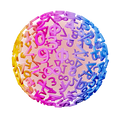
How Do Price and Demand Affect Revenue?
Theory
Revenue and price function
The demand for a product depends on its price, among other things. Demand is often a function of the price
where tends to decrease when goes up. This correlation can also be written as
where the price is a function of the demand .
Theory
Maximizing revenue through affecting demand
hen you sell units and the price is a function of this demand , revenue from these sales is given by
The demand that maximizes the revenue is the demand that yields the highest revenue.
Example 1
A business has determined its price function to be . What’s the revenue function of this business?
You know that revenue is calculated by the formula . If you insert what you know directly into this formula the revenue function is
Example 2
Find the demand that yields the greatest revenue for the business in Example 1. Use that to find the greatest revenue, and find the price of the product when the revenue is at its highest.
When an exercise talks about greatest or least, it’s screaming at you to differentiate!
So you differentiate the revenue function and set it equal to zero. In other words, greatest in the exercise is referring to the maximum.
The process goes like this:
This tells you that the demand that yields the greatest revenue is .
You find the greatest revenue by inserting this value for into the revenue function
That makes the greatest revenue of the business
You find the price of the product when the revenue is at its maximum by inserting the same value for into the price function
from Example 1:
The price of the product at this point is .
Theory
Demand and Price
When the demand (the number of units the market wants) depends on the price, you get the expression , which is the demand as a function of the price. This will be a value for , and you get
If revenue depends on demand, you can insert for in the revenue function , making the revenue function look like this:
Example 3
Find the demand as a function of the price for a product with a revenue function of
You know that the formula for revenue is , which means that you have to play with the expression to transform it into an expression multiplied by .
You can do that through factorization in this way:
You can write as is the demand. That gives you
just as the exercise asked for.




















